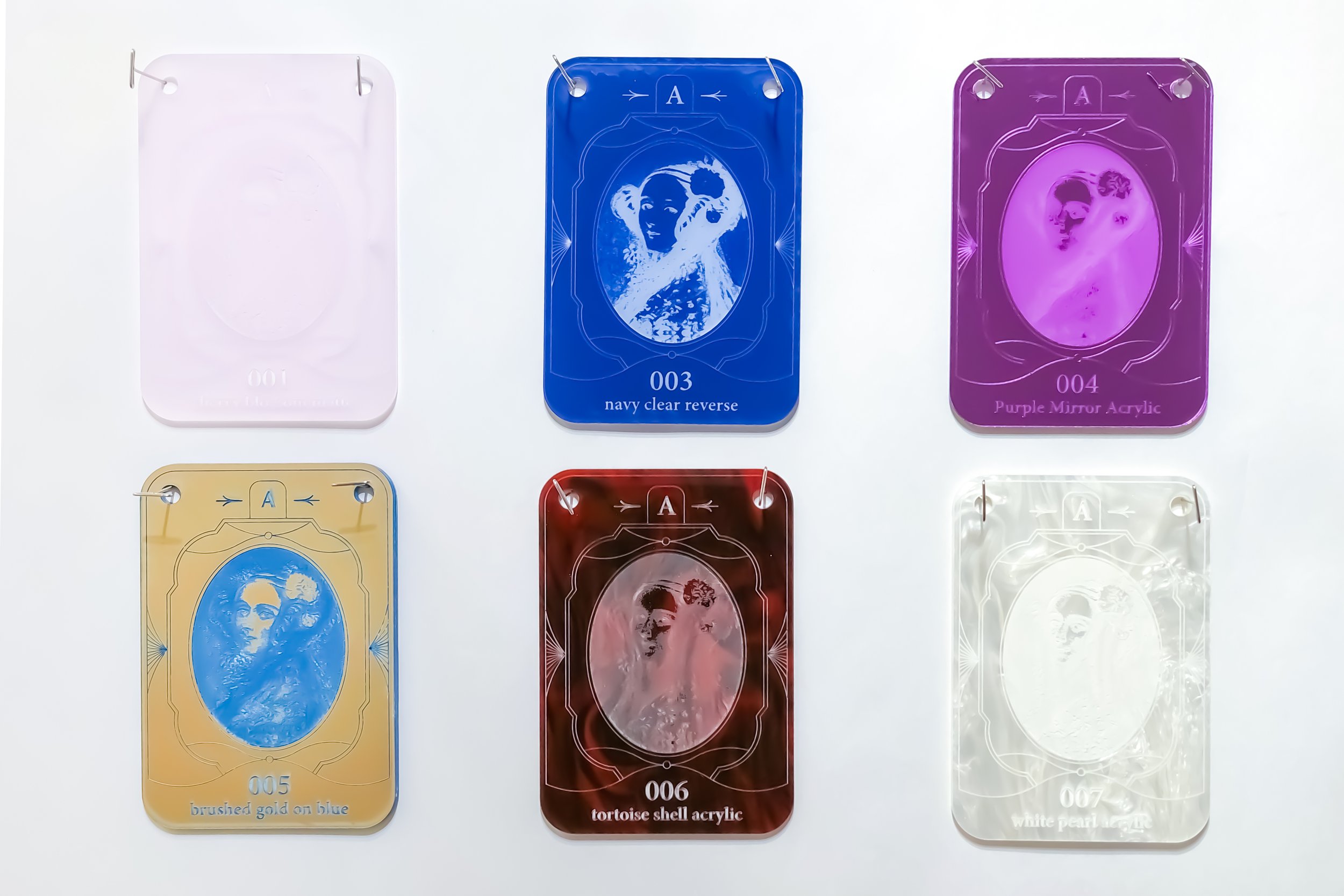Digifab Samples Library
As a research assistant for Professor Sophia Brueckner, I worked on a physical material samples library that showcases machine settings of the laser cutter, 3D printer (FDM and SLA), CNC milling machine and embroidery machine on a range of materials including: woods, plastics, porcelain, mylar, enamelled metal and linoleum.
In essence, the samples library is a visual representation of machine settings on different materials, enabling people to make decisions informed by visual evidence. Machine settings take a lot of experimentation and finesse to get right; it is thus incredibly wasteful, costly and foolish for individuals to repeat the same tests over and over again. Consulting the library, people can see for themselves what settings create what visual effect without the cost of tedious experimentation. This removes the barrier of uncertainty, empowers people to make decisions with confidence and helps grow a database of knowledge. For this project, I have been trained on all the machines, developed templates/models, organised a labelling system and database, and wrote instructional guides.
Phase 1: Laser Cutter
The laser cutter performs three basic operations: vector cut (red), vector engrave (blue) and raster engrave (black). For the machine to recognise which parts of design require which operation, the design must be colour coded accordingly. Every sample is a set of two cards that showcases vector and raster engraving at different power settings, as well as common applications that most people would find useful when deciding which power setting to use on a particular material.
There are two main methods to control the depth of a raster engrave: adjusting the greyscale values digitally and adjusting the power intensity on the raster engrave operation. Both of these methods are demonstrated on the samples. First, solid rectangles are raster engraved using each power setting. Then, depending on the particular material, an “optimal” raster engrave setting is starred and used to engrave the rest of the sample, including a gradient bar, halftone gradient bar and a portrait in homage to Ada Lovelace who is considered the first computer programmer in history. Special effect materials, such as duo-toned materials where the surface is a different colour to the material underneath are particularly great for demonstrating how clever design and mastery over power settings can be used to create unique visual effects.
Each sample is then logged into a database under a corresponding unique code and name where extra information like material thickness, purchase links and notes are documented for future reference. The database is currently for internal purposes only but will eventually be public when the library is substantially populated.
For a complete example of my database organisation skills, please take a look at:






